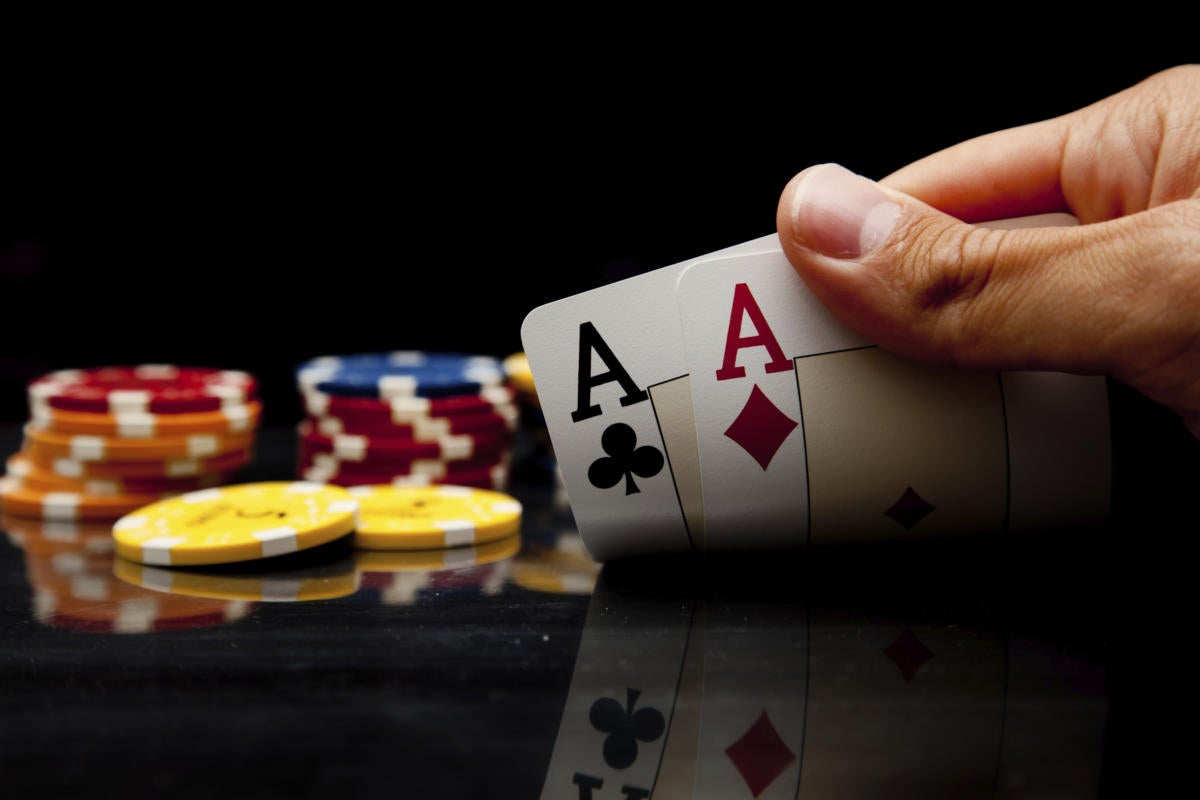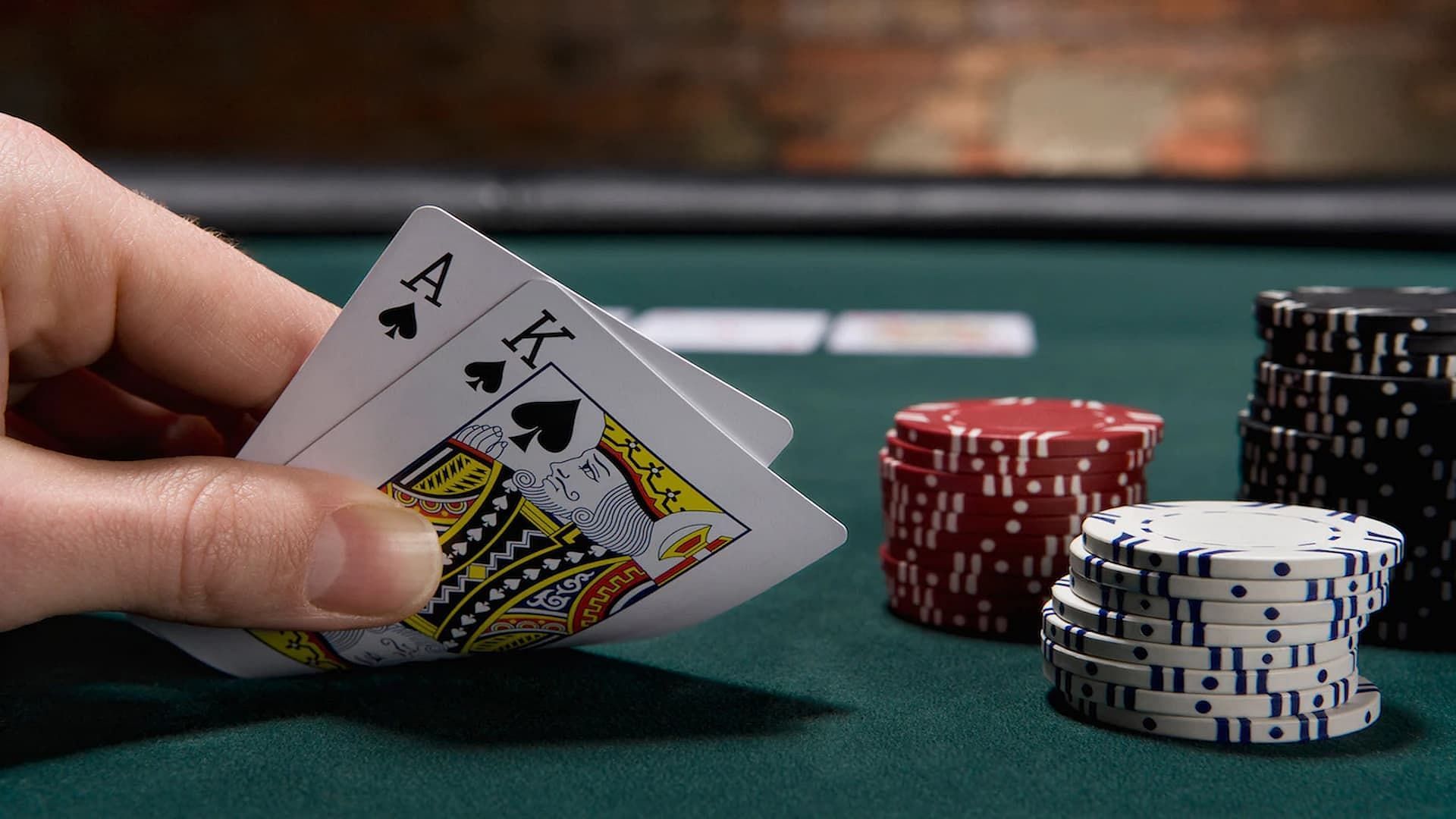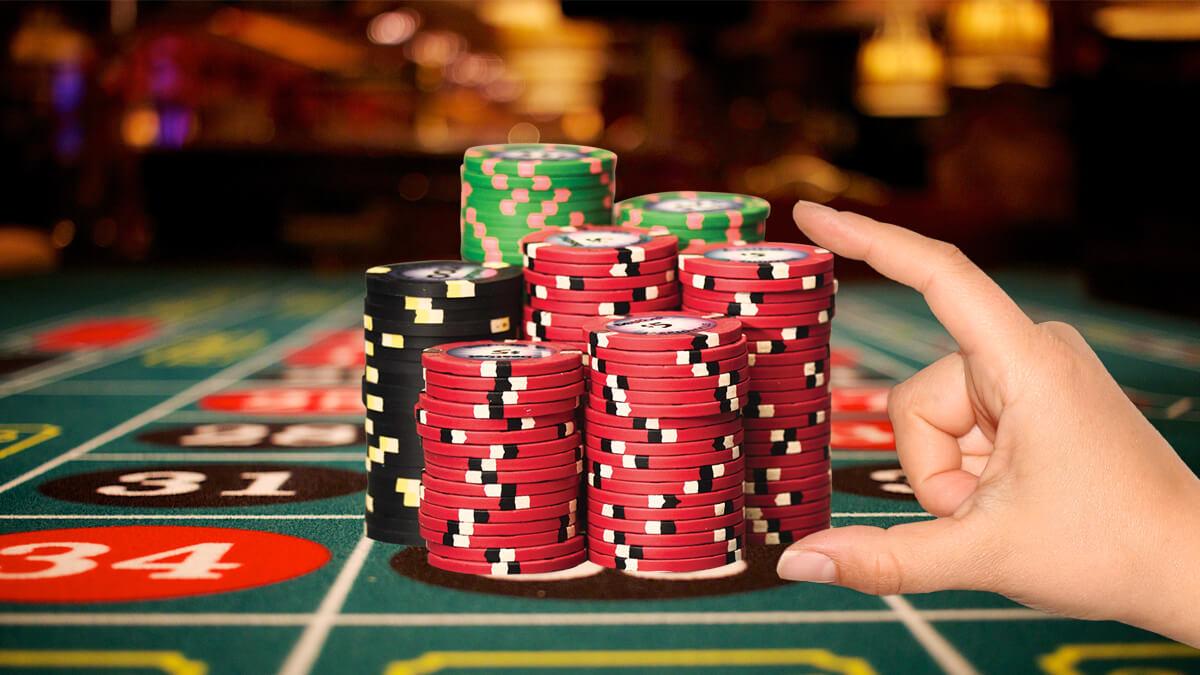Introduction
What Are Poker Chips Made Of: Poker chips are an essential component of the poker game, adding both practical and aesthetic value to the playing experience. These small, round discs are carefully crafted from various materials to ensure durability, functionality, and an enjoyable tactile sensation.
Historically, poker chips were primarily made of clay or ceramic materials. Clay chips offered a distinct and satisfying weight in the hand, as well as a pleasant texture. However, as the demand for poker chips grew, manufacturers sought alternative materials that could be produced more efficiently and cost-effectively.
Modern poker chips are commonly made from a composite material known as ABS (Acrylonitrile Butadiene Styrene). ABS chips are durable, lightweight, and available in a wide range of vibrant colors and designs. They are favored by many casinos and poker enthusiasts for their versatility and affordability.
In addition to ABS, poker chips can also be made from other materials such as plastic, metal, or even wood. These materials are often utilized for specific purposes, such as novelty sets, home games, or high-end casino sets.
The choice of material for poker chips can significantly impact their appearance, feel, and longevity. Whether it’s the classic clay chips, modern composite ABS chips, or other materials, poker chips are meticulously designed to enhance the overall poker playing experience.

What are Las Vegas poker chips made of?
The majority of poker chips exchanged in the gaming world are created from a composite that includes clay, but, in the end, is a much more durable version of clay. A variety of Las Vegas casinos also consist of ceramic chips, similar to the currency used for a poker game held at your home.
Las Vegas poker chips are typically made of a composite material that consists of a combination of clay and other materials. These composite chips are sometimes referred to as “clay composite” or “clay-filled” chips. The exact composition may vary between manufacturers, but generally, the chips contain a small percentage of clay mixed with other materials such as resin, sand, and other polymers.
The clay content in these chips is usually around 10-15%, which gives them a more authentic feel and sound compared to completely plastic chips. The addition of other materials helps to enhance durability, weight, and security features. The chips are designed to be sturdy, resistant to wear and tear, and difficult to counterfeit.
It’s worth noting that while Las Vegas poker chips may be referred to as “clay chips,” they are not entirely made of clay as the name might suggest. The composite materials used in their production provide a balance between durability, weight, and authenticity, making them suitable for use in professional poker games and casinos.
What were poker chips made of before plastic?
At one time, poker chips were made of clay and had a much better feel than cheap plastic chips. However, modern chips are not made of clay, but a composite material meant to mimic the touch and feel of those style of chips.
Before the advent of plastic poker chips, they were typically made of various materials such as clay, ceramic, and even bone. Clay chips were popularly used in casinos and were considered the standard for many years. These chips were made from a mixture of clay and other materials, which were molded and then heat-pressed to create a durable and uniform chip.
Ceramic chips came into existence as an alternative to clay chips. They were made from a ceramic material, typically a high-density polymer composite, which offered more customization options in terms of design and graphics.
Bone chips were used in the earliest days of poker. They were made from the bones of animals, such as ivory or bone from cattle. However, bone chips are no longer in use due to ethical concerns and the availability of more modern and durable materials.
Overall, the materials used to make poker chips have evolved over time, with plastic chips becoming the most common and cost-effective choice in modern times.
Why are poker chips magnetic?
Being attracted to a magnet merely means that the chips contain something magnetic, such as steel. It doesn’t mean that the chip itself is a magnet. Specifically, items can be: ferromagnetic – where the electrons in the item have parallel spin and the item can become magnetized.
Poker chips are not inherently magnetic. Standard poker chips used in casinos and home games are made of materials such as clay, ceramic, or a composite blend of materials like clay and plastic.
However, some specialized poker chips or casino chips may include magnetic properties for security purposes. These chips are often referred to as “magnetic chips” or “RFID chips.” RFID stands for Radio Frequency Identification, and it is a technology that uses electromagnetic fields to identify and track objects.
The inclusion of RFID technology in poker chips allows for better security and tracking in casinos. Each chip is embedded with a tiny RFID tag that contains a unique identifier. These chips can be scanned and tracked throughout the casino, helping to prevent counterfeiting, monitor chip movement, and detect any suspicious activity.
By using RFID chips, casinos can ensure better control over their chip inventory, track player bets more accurately, and prevent theft or fraud. The magnetic properties of RFID chips are utilized to interact with specialized readers or scanners that can detect and read the chip’s unique identifier.
It’s important to note that these RFID chips are not commonly used in standard poker games or home games. They are typically reserved for casinos and high-stakes poker tournaments where extensive security measures are necessary.

What makes poker chips valuable?
In poker, the value of a chip depends on the game or event. Values in cash games are a direct representation of cash. Players in a $1/$2 No Limit Hold’em game who buy in for $300 will receive that amount in chip value. Colours vary by casino but tend to follow similar patterns at least for lower values.
Several factors contribute to the value of poker chips, including:
1. Material: The material used to make the chips affects their value. Clay chips or clay composite chips are generally considered more valuable than plastic chips due to their weight, feel, and sound. Ceramic chips are also highly regarded for their durability and customization options.
2. Design and Artwork: Chips with attractive and intricate designs or artwork tend to be more valuable. Custom-designed chips or those featuring casino logos, unique patterns, or artwork from renowned artists can command higher prices among collectors.
3. Rarity: Rarity plays a significant role in determining chip value. Limited-edition or discontinued chips are often more sought after by collectors, increasing their value. Some chips may have been produced in limited quantities or used exclusively in specific casinos or events, making them rarer and more valuable.
4. Condition: The condition of the chips impacts their value. Chips in excellent condition with minimal signs of wear, scratches, or damage are generally more valuable than heavily used or damaged chips.
5. Historical Significance: Poker chips associated with significant events, renowned casinos, or famous poker players can hold historical significance and therefore have higher value. For example, chips used in iconic tournaments like the World Series of Poker or chips from famous casinos that are no longer in operation can be highly valuable.
6. Demand and Collectibility: Ultimately, the value of poker chips is determined by supply and demand dynamics. Chips that are in high demand among collectors or enthusiasts will have a higher value. Rarity, historical significance, and desirability all contribute to the collectibility of chips, which can drive up their market value.
It’s worth noting that the value of poker chips can vary significantly depending on the market and the specific preferences of collectors. Factors such as local demand, regional popularity, and the overall condition of the chip market can influence prices.
Who invented poker chips?
As the legend goes, Richard Canfield, the one-time owner of the Saratoga Clubhouse (later known as the Canfield Casino) and “once the best known gambling resort proprietor in [the] country,” per the New York Times, was the first to use casino chips, long before anyone ever did in Las Vegas.
The exact origins of poker chips are not attributed to a single inventor. Instead, the use of chips in poker games developed gradually over time. In the early days of poker, players would typically use various items such as coins, gold nuggets, or even small objects like beans or pieces of wood to represent their bets.
It is believed that the concept of standardized poker chips began to emerge in the mid-19th century. One theory suggests that the invention of poker chips can be credited to an American saloon owner named Joseph H. Crowell, who introduced clay chips to his gambling establishment in New Orleans around 1820.
However, the widespread adoption of poker chips in casinos and poker games can be attributed to the development of gambling establishments in the United States in the late 19th and early 20th centuries. As poker became more popular, casinos and card rooms began producing and using their own custom-designed poker chips.
While the exact inventor of poker chips may be unclear, their use and standardization have become an integral part of the poker experience, providing a convenient and standardized way to represent and track bets during the game.
Can casinos track poker chips?
Embedded RFID tags (most often used in high value chips) broadcast unique identifiers over radio frequencies. RFID stands for Radio Frequency Identification. RFID tags allow casinos to keep track of chips, monitor play and even thwart thieves.
Yes, casinos have various methods in place to track and monitor poker chips. This is done to ensure the security and integrity of the casino’s chip inventory and to prevent counterfeiting or theft.
Casinos use several security measures to track poker chips:
1. RFID Technology: Some casinos embed radio frequency identification (RFID) tags or chips into their higher-value chips. These RFID tags contain unique identifying information that can be read by specialized scanners. This technology allows casinos to track the movement of chips throughout the establishment, including when they are purchased, cashed out, or transferred between players and dealers.
2. Serial Numbers and Logbooks: Many casinos assign unique serial numbers to their poker chips and maintain detailed records in logbooks. These logbooks track the movement of chips, such as when they are distributed to tables, when they are returned, or when they are cashed in or out. Serial numbers help identify specific chips and aid in detecting any discrepancies or irregularities.
3. CCTV Surveillance: Casinos have extensive closed-circuit television (CCTV) systems that monitor gaming areas, including poker tables. These cameras can capture footage of players, dealers, and the chip exchanges, providing an additional layer of security and oversight.
4. Audits and Inventories: Casinos regularly conduct audits and inventories of their chip supplies to reconcile the number of chips in circulation with their records. This helps identify any discrepancies and ensure the accurate accounting of chips.
By implementing these tracking methods, casinos can effectively manage their chip inventory, detect any potential fraud or theft, and maintain the overall security of their operations.
Do poker chips have any value?
Poker chips represent different values depending on the game being played. In most cases, each chip is worth a certain amount of money. For example, in a $1/$2 game of no-limit Texas Hold’em, each chip may be worth $1. In a $5/$10 game, each chip may be worth $5.
Yes, poker chips have value within the context of a poker game or casino. While poker chips themselves do not have inherent monetary value, they are used as a medium of exchange during gameplay.
In a casino setting, each poker chip is assigned a specific denomination or value. This allows players to easily bet, raise, and call during a game without having to use actual currency. The value of each chip is typically indicated by its color and markings, which are specific to the casino or poker room where they are used.
While poker chips cannot be directly exchanged for cash at the casino, players can cash out their chips at the cashier’s cage or designated areas within the casino. The value of the chips is then determined based on their assigned denomination. Players can also use their chips as a form of currency within the casino to purchase food, drinks, or other amenities.
It’s important to note that the value of poker chips is limited to their use within the casino or poker game. Outside of the casino, poker chips typically have no intrinsic value and are considered collectibles or memorabilia.
What are poker chips called?
Casino tokens (also known as casino or gaming chips, checks, cheques or poker chips) are small discs used in terms of currency in casinos.
Poker chips are small, round discs or tokens that are used in poker games and casinos to represent a specific monetary value. They serve as a convenient and standardized method of wagering and tracking bets during gameplay.
Poker chips are made from various materials, and their composition has evolved over time. In the past, poker chips were primarily made of materials such as clay, bone, ivory, or even wood. These materials were chosen for their durability and tactile qualities.
Today, most poker chips are made from a composite material or a combination of materials such as clay composite, ceramic, or plastic. Clay composite chips are popular in casinos as they offer a good balance of weight, durability, and texture. Ceramic chips are highly customizable and often used for special events or promotions. Plastic chips, on the other hand, are more affordable and commonly used in casual home games.
While poker chips themselves do not have intrinsic value outside of the game, they represent a certain monetary value agreed upon by the players. Each chip denomination corresponds to a specific value, such as $1, $5, $25, or higher, depending on the game’s stakes. Players use these chips to place bets, and at the end of the game, they can exchange their chips for cash based on their accumulated value.

Conclusion
Poker chips are made from a variety of materials, each with its own unique qualities and characteristics. From the traditional clay chips to modern composite materials like ABS, poker chips are designed to provide durability, functionality, and aesthetic appeal.
The materials used to make poker chips have evolved over time to meet the demands of the growing poker industry. Clay chips, known for their weight and texture, have a classic appeal and are favored by some players for their authenticity. However, composite materials like ABS have become increasingly popular due to their durability, versatility, and affordability.
The choice of material for poker chips can impact the overall gaming experience. The weight, feel, and sound of the chips as they stack and shuffle can enhance the excitement of the game. Additionally, the visual appeal and design of the chips can add a touch of sophistication and style to the poker table.
Whether made of clay, ABS, plastic, metal, or wood, poker chips are carefully crafted to meet the needs and preferences of poker players. They are not only functional objects used for wagering, but also symbols of the game’s rich history and culture.









































